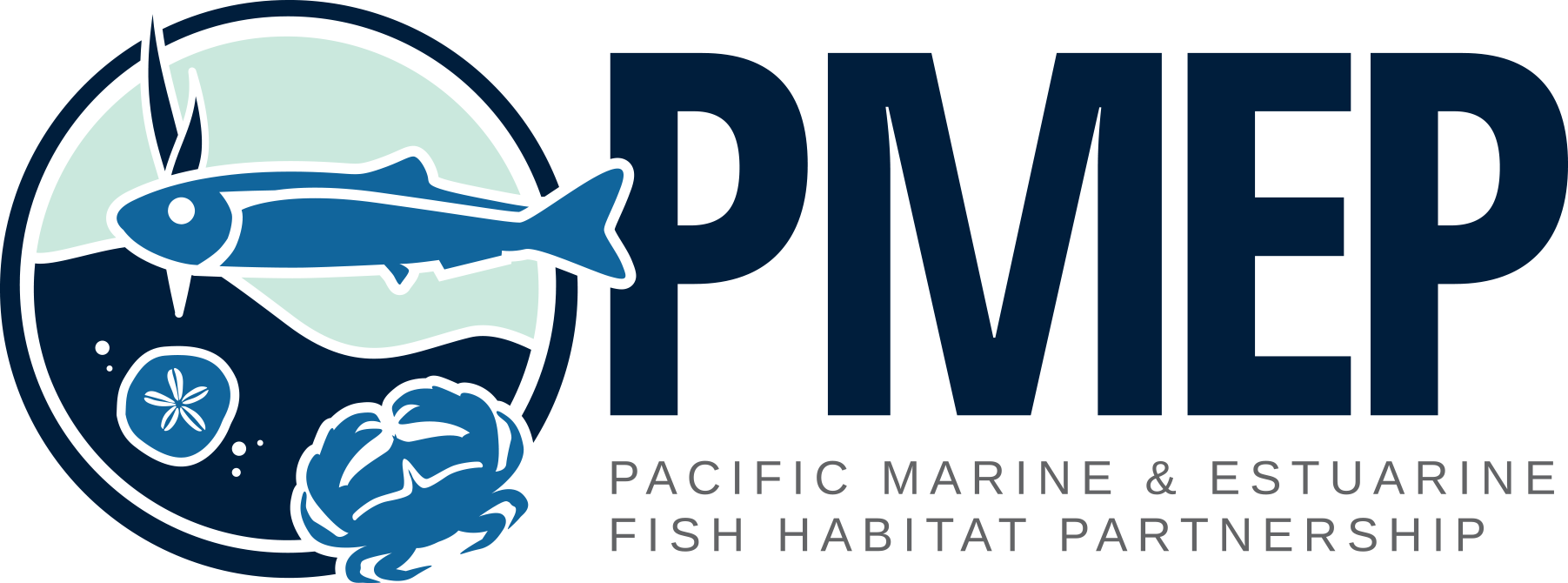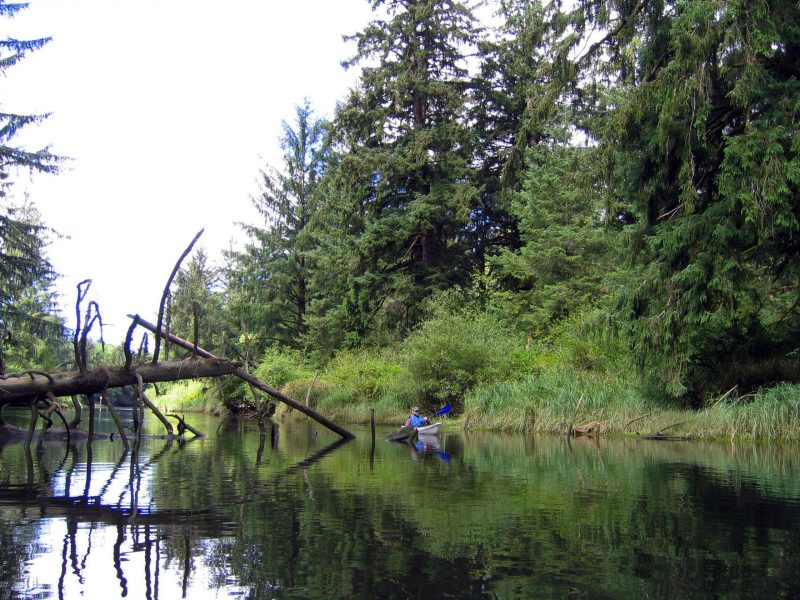PMEP is thrilled to announce the completion of our latest assessment report Restoring Tidal Swamps in the U.S. Pacific Northwest: Information for Restoration Practitioners. Tidal swamps were historically common in the Pacific Northwest but are now rare, having been lost at greater rates than other types of tidal wetlands in many areas. This report provides information on early efforts in the emerging field of tidal swamp restoration, including documentation of 14 active tidal swamp restoration projects in the Pacific Northwest. The report provides an overview of the ecological importance of tidal swamps, the importance of restoring these valuable habitats, and unique challenges that practitioners should consider when approaching their restoration. The report includes information on reference site selection, elevated platforms, reed canarygrass control, large woody debris and channel design, beaver monitoring, and effectiveness monitoring. Find the full report HERE.
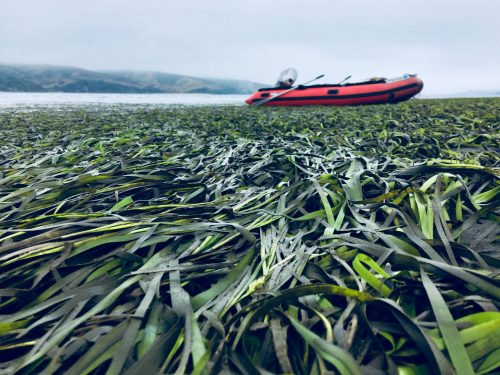
- March 27, 2024
- Joan Drinkwin
- Publication
- 0 comments
In 2020, PMEP commissioned a report Eelgrass Restoratin on the U.S. West Coast: A comprehensive Assessment fo Restoration Techniques and Their Outcomes. The report synthesize eelgrass restoration project successes along the U.S. West Coast and identifies best practices for eelgrass restoration and mitigation. PMEP created a webpage summarizing the synthesis findings and providing guidance for eelgrass restoration practitioners. Drs. Melissa Ward and Kathryn Behishti conducted the reveiw and recently published their findings. Their paper,”Lessons learned from over thirty years of eelgrass retoration on the U.S. west coast” was published in Ecosphere and can be found HERE. The project was supported by Pew Charitable Trusts.

- May 29, 2021
- Joan Drinkwin
- Data and Assessments, Publication
- 0 comments
PMEP is proud to announce the release of Eelgrass Restoration on the U.S. West Coast: A Comprehensive Assessment of Restoration Techniques and Their Outcomes. Eelgrass is an important foundation species along the U.S. West Coast, supporting a suite of ecosystem services and functions and providing food and shelter for many fishes and invertebrates. In 2018, PMEP published Eelgrass Habitats on The U.S. West Coast: State of the Knowledge of Eelgrass Ecosystem Services and Eelgrass Extent and compiled a geodatabase of eelgrass presence/absence and current and historic extent of eelgrass in 444 estuaries along the U.S. West Coast. In 2020, PMEP commissioned this new report to synthesize eelgrass restoration project successes along the U.S. West Coast to identify best practices for eelgrass restoration and mitigation. The authors of the report reviewed and synthesized data from 51 eelgrass restoration (non-mitigation and mitigation) projects from California, Oregon, and Washington. They identified those methods and approaches that resulted in successful restoration. The report was prepared by Kathryn Beheshti and Melissa Ward and was funded by Pew Charitable Trusts with support from the Friends of the South Slough Reserve.
Access the project webpage HERE.
Photo credit: Melissa Ward
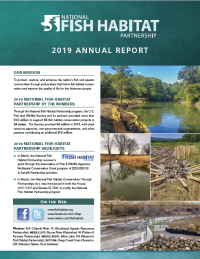
- August 26, 2020
- Joan Drinkwin
- Announcement, Publication
- 0 comments
The National Fish Habitat Partnership released its 2019 Annual Report highlighting progress on its mission to “protect, restore, and enhance the nation’s fish and aquatic communities through partnerships that foster fish habitat conservation and improve the quality of life for the American people.” Through the National Fish Habitat Partnership program, the U.S. Fish and Wildlife Service and its partners provided more than $18 million to support 83 fish habitat conservation projects in 34 states. The Service provided $4 million in 2019, with state resource agencies, non-governmental organizations, and other partners contributing an additional $14 million. read the report here.
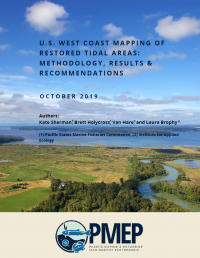
- March 10, 2020
- Kate Sherman
- Data and Assessments, Publication
- 0 comments
The Pacific Marine and Estuarine Fish Habitat Partnership (PMEP) is pleased to release its Restored Tidal Estuaries Report. The report documents the methods and results of a mapping project undertaken to update its tidal wetland loss assessment to include areas where tidal connectivity and inundation have been restored. PMEP mapped 127 tidal re-connection projects across the West Coast, identifying 8,085 hectares (19,978 acres) of restored tidal wetland habitat. The project focused on mapping restored areas that were shown as “lost” within the 55 estuaries included in PMEP’s original tidal wetland loss assessment. This mapping effort resulted in 2.3% of tidal wetlands that were previously classified as “lost” being reclassified as “restored,” while 82.7% of tidal wetlands remained classified as “lost.” These results illustrate both the successes of restoring tidal connectivity and the potential for future efforts to re-connect important fish habitat across the West Coast. You can download the full report here. You can view the updated data layers showing restored tidal estuaries here.
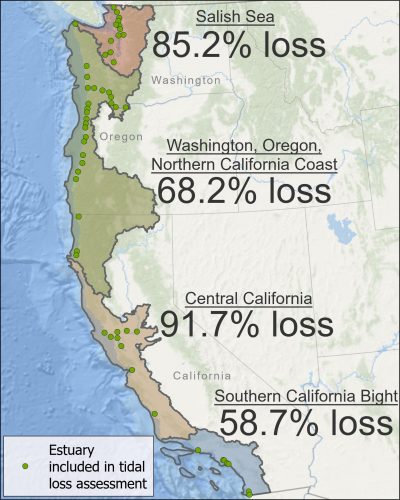
- August 22, 2019
- Joan Drinkwin
- Publication
- 0 comments
PMEP partners are lead authors on a newly published collaborative study that maps the historical extent of West Coast estuaries and estimates losses of vegetated tidal wetlands since European settlement. It is the first time researchers have applied consistent methods across all 450 estuaries of the contiguous U.S. West Coast. Their results show that more than a century of development has erased roughly 85 percent of original vegetated estuarine wetlands, especially around major river deltas.
The project was coordinated by the Pacific Marine and Estuarine Fish Habitat Partnership (PMEP). Read the full press release here. The report, published August 14 in PLOS ONE, can be accessed here.
